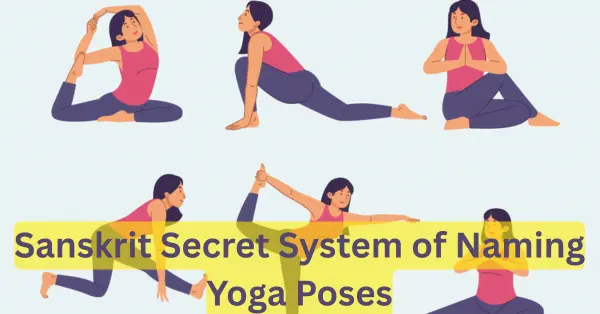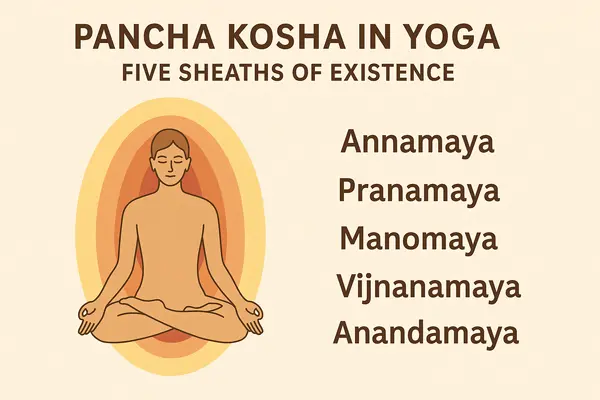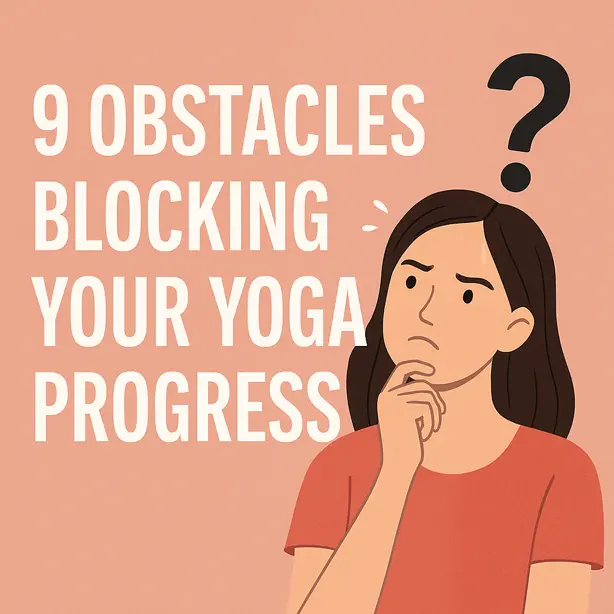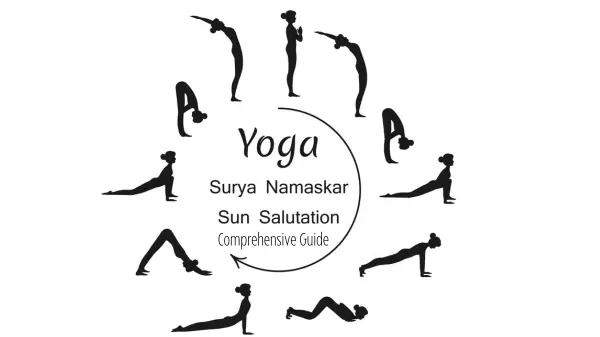Ever wondered how Yoga Asanas are named? There is a systematic way of naming asanas throughout the history of yoga. Today, we will learned how an asana is named in this blog.
All the names of Asanas in Yoga are derived from the Sanskrit root words. Things become easier with the names of Asanas if you know the meaning and remember these Sanskrit root words that are about to come ahead.
Haṭha Ratnāvalī, a 17th-century text by Srinivasa, is the first to name 84 asanas, though it describes only 36. Earlier texts mentioned 84 but didn’t name them.[1]
How Yoga Poses Get Their Names
All the names of Asanas in Yoga fall under the six categories. Six categories are-
1. Characteristics
2. Anatomy
3. Sages and Deities
4. Animals
5. Shapes of objects
6. Numbers
How a Yoga Pose is Named in Detail
Let’s understand this in detail with the examples of Asanas in each category. Authentically, all the yoga pose names are in Sanskrit.
1. Characteristics
Sanskrit has root words for characteristics. The asanas are named after or with the help of these words.
A. Parivrrta or Twisted/Revolved
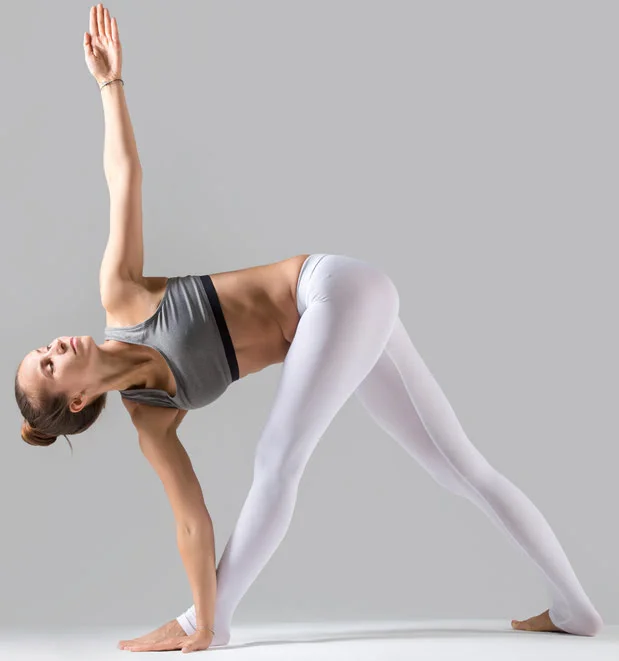
Example- Parivrtta Trikonasana (Revolved Triangle Pose)
The root word here is Parivrtta, which refers to the twisted or revolved body during the asana. Whenever you come across the word Parivrtta, you automatically get the hint that some twisting or revolving is involved in the pose.
B. Ardha or Half
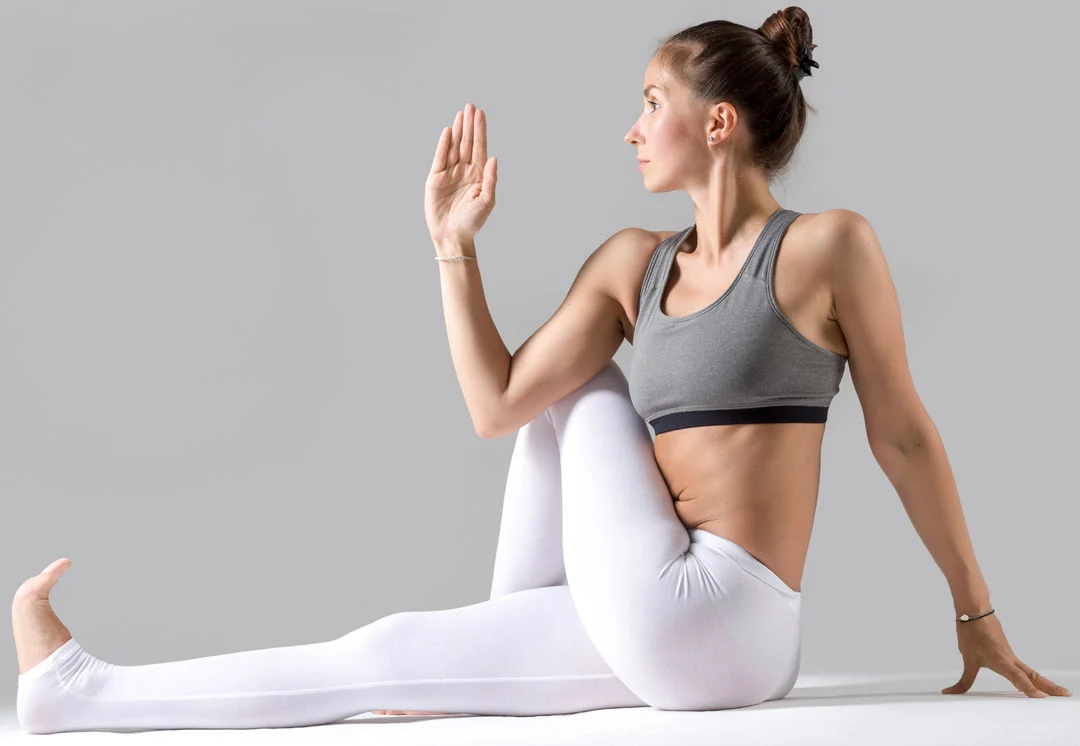
Example- Ardha Matsyendrasana (Half-Fish Pose). Obviously, the root word is Ardha.
C. Adho or Downward

Example- Adho Mukha(Facing) Svanasana (Downward Facing Dog)
D. Urdhva or Upward
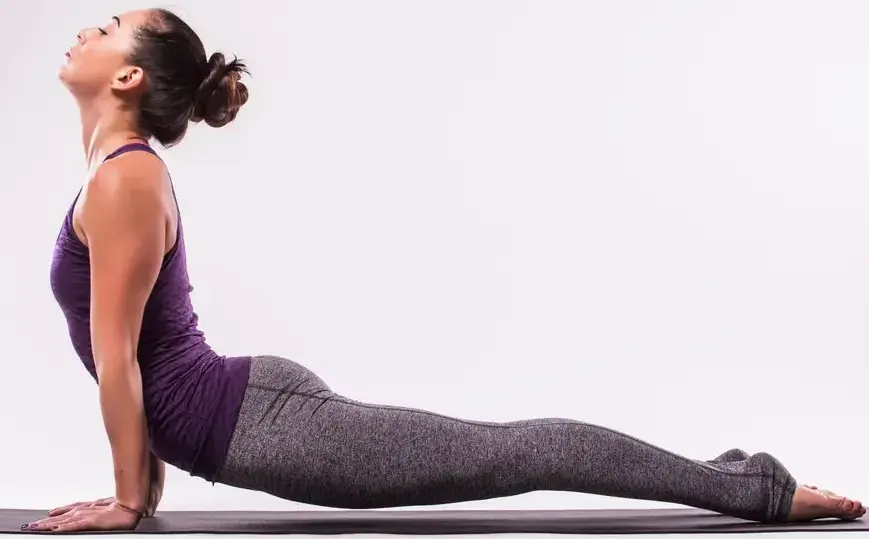
Example- Urdhva Mukha(Facing) Svanasana (Upward Facing Dog)
E. Badhha or Bound

Example- Badhha Konasana (Bound Angle Pose)
F. Supta or On Your Back

Example- Supta Badhha Konasana (Reclining Bound Angle Pose)
G. Uttan or Stretch
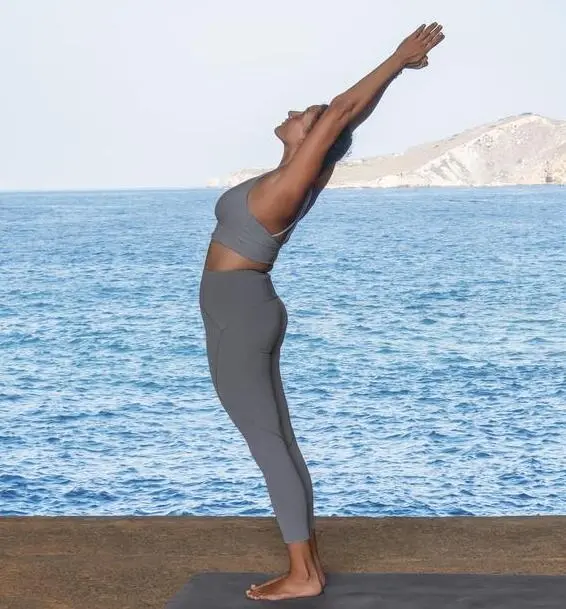
Example- Hasta Uttanasana (Raised Arms Pose)
H. Utthita or Extended

Example- Utthita Parshvakonasana (Extended Side Angle Pose)
I. Parshva or Side
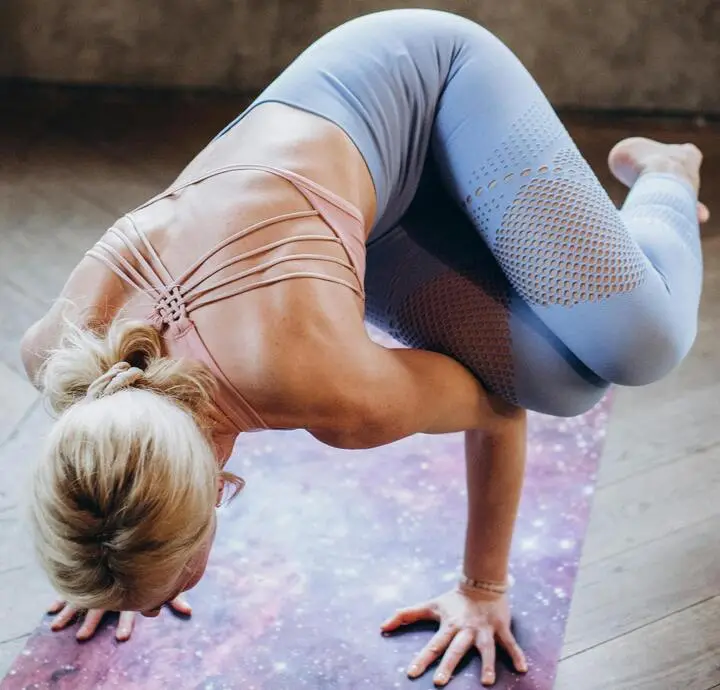
Example- Parshva Bakasana (Side Crow Pose)
J. Prasarita or Spread Out

Example- Prasarita Padottanasana (Wide-Legged Forward Bend Pose)
K. Kona or Angle

Example- Konasana (Angle Pose)
2. Anatomy
Now comes the second category, which involves the anatomical terms. Below are all the anatomic terms you will come across in the names of Asanas.
- Pada– Foot/Leg. Pada Hasta Asana
- Hasta– Hand. Hasta Uttana Asana
- Anguli– Fingers. Uttita Anguli Sukhasana
- Angushta– Big Toe. Pada Angushta Asana
- Janu– Knee. Janu Sheesh Asana
- Shirsha– Head. Shirshasana
- Mukha– Face. Adho Mukha Asana
- Karna– Ear. Karnapidasana
- Jathara– Stomach. Jathra Parivartanasana
- Anga– Limb. Chatur Anga Dandasana
- Bhuja– Arm. Bhujangasana
- Sarvanga– Full Body. Sarvangasana
- Shava– Corpse. Shavasana
- Prana– Life Force. Pranasana
- Paschima– West. Paschimottanasana
- Purva– East. Purva Uttana Asana
3. Sages and Deities
These are special poses named after the Sages and Deities.
- Marichiasana – It is named after the Sage Marichi. He was the son of Brahma(Cosmic Creator) and the father of Kashyap.
- Matseyndrasana– Named after the lord of fishes, MatseyndraNath. He was the founder of Hatha Yoga and the Guru of the great GorakhNath.
- Gorakhasana– Named after the great GorakhNath. He also invented countless ways to attain Liberation.
- SuryaNamaskar– Named after the Surya or Sun.
- Virbhadrasana– Named after the extremely fearsome form of the Lord Shiva, Virbhadra.
- Bharadvajasna– Named after the Sage Bharadvaja. He was the father of Dronacharya.
- Natarajasana– Named after the dancing form of Lord Shiva, Nataraja.
4. Animals
Yogis in ancient times got inspired by the qualities of animals, resulting in the yogasanas named after the animals.
- Svana– Dog. Svanasana
- Bheka– Frog. Bhekasana
- Baka– Crow. Bakasana
- Usthra– Camel. Usthrasana
- Bitil– Cow. Bitilasana
- Bhujanga– Snake. Bhujangasana
- Kapot– Pigeon. Kapotasana
- Kurma– Turtle. Kurmasana
- Matsya– Fish. Matsyasana
- Shalabha– Locust. Shalabhasana
5. Shapes of objects
Now comes the shapes of the objects.
- Hala– Plough. Halasana
- Vriksha– Tree. Vrikshasana
- Tada– Mountain. Tadasana
- Setu– Bridge. Setubandhasana
- Chandra– Moon. Chandrasana
- Danda– Staff/Stick. Dandasana
- Dhanur– Bow. Dhanurasana
- Nav/Nauka– Boat. Navasana
6. Numbers
- Eka/Ekam– One
- Dwi/ Dve– Two
- Tri/Trini– Three
- Chatur/Catvari– Four
- Pancha– Five
- Shat– Six
- Sapta– Seven
- Ashta– Eight
- Nava– Nine
- Dasha/Dasham– Ten
Conclusion
A yoga pose is named with the permutations and combinations of these six categories in Sanskrit. If you are a yoga teacher, you must use the Sanskrit names of Yoga poses. It shows the authenticity of Yoga.
As a Yoga teacher, you are a medium for Yoga Philosophy. You should protect the authenticity of Yoga.
Also, texts from the eleventh century onwards frequently state that there are eighty-four āsanas, sometimes listing them, sometimes not. This number is often symbolic, representing completeness.[2]
Reference
[1] Śrīnivāsayogī, Gharote ML, Devnath P, Jha VK. HaṭHaratnāValī (a Treatise on HaṭHayoga) of ŚRīNivāSayogī. 1st ed. Lonavala Yoga Institute (India); 2002. Available from: Link to Book. <Go to Citation>
[2] Mallinson J, Singleton M. Roots of yoga. London: Penguin Books; 2017. Available from: Link to Book. <Go to Citation>

